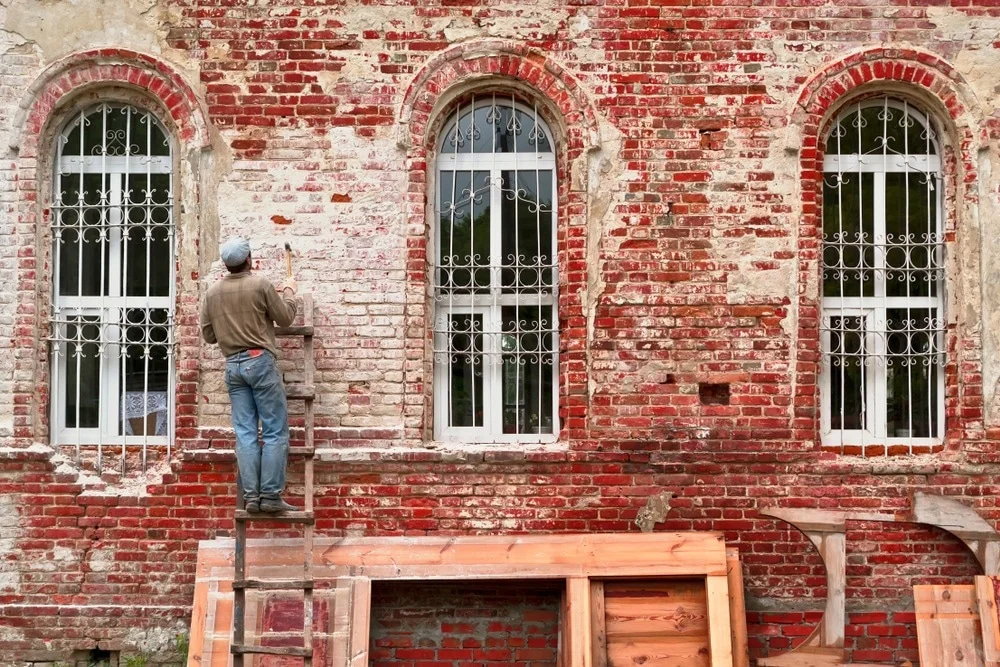Preserving heritage buildings in sports infrastructure merges history with innovation, attracting enthusiasts seeking authentic venues. Integrating traditional methods with modern upgrades transforms historic structures into iconic sports facilities.
Explore the fusion of tradition and progress in heritage building restoration techniques, creating a winning experience for sports fans.
Key Takeaways
- Assessment of current condition guides the restoration process
- Historical connection immerses enthusiasts in the past
- Ensuring structural integrity throughout the restoration process
- Adaptive reuse transforms old spaces for sports activities
The Importance of Heritage Buildings
Regularly overlooked, the legacy and significance of heritage buildings in the realm of sports enthusiasts are paramount to preserving history and tradition. These iconic structures serve as tangible links to the past, connecting fans to the roots of their beloved sports. The importance of heritage buildings lies not only in their architectural beauty but in the stories they hold within their walls. Each crack, each brick, whispers tales of victories, defeats, and the passion that has fueled generations of athletes and supporters.
For sports enthusiasts, heritage buildings are more than just venues; they are hallowed grounds where memories are made and legends are born. The authenticity and character exuded by these structures create a sense of belonging and pride among fans, fostering a deep emotional connection to the sports they love. Preserving these buildings is not merely an act of conservation but a commitment to honoring the heritage and traditions that form the very essence of sports culture. Embracing the importance of heritage buildings ensures that the spirit of the past continues to inspire and unite sports enthusiasts for generations to come.

Challenges in Heritage Building Restoration
Facing the intricate task of heritage building restoration, professionals encounter a myriad of challenges that demand precision, expertise, and unwavering dedication. These challenges include:
- Structural Integrity: Ensuring that the building’s structure is sound and stable throughout the restoration process is a significant challenge that requires careful planning and execution.
- Historical Accuracy: Preserving the historical authenticity of the building while incorporating modern amenities can be a delicate balance that restoration experts must navigate.
- Regulatory Compliance: Adhering to strict regulations and building codes, often specific to heritage buildings, adds an extra layer of complexity to the restoration project.
- Budget Constraints: Managing costs effectively without compromising the quality of materials or workmanship is a constant challenge in heritage building restoration projects.
Overcoming these obstacles requires a deep understanding of architectural history, construction techniques, and preservation practices, making heritage building restoration a demanding yet rewarding endeavor for professionals in the field.
Techniques for Restoring Heritage Buildings
In the intricate realm of heritage building restoration, employing specialized techniques rooted in traditional craftsmanship and expertise is paramount to ensuring the preservation of historical authenticity and structural integrity. Techniques for restoring heritage buildings often begin with a thorough assessment of the structure’s current condition, identifying areas of decay, damage, or wear. This evaluation guides the restoration process, informing decisions on which methods and materials will best revive the building’s original charm.
One common technique is masonry restoration, where skilled artisans meticulously repair and replace damaged bricks or stones using techniques that match the original construction methods. Woodwork restoration is another crucial aspect, involving the repair or replication of intricate wood details such as doors, windows, and decorative trim. Roof restoration may require traditional thatching or slate work to uphold the building’s historical accuracy.
Additionally, specialists in heritage building restoration often employ techniques like lime plastering, which is essential for maintaining the breathability of older structures. By adhering to these time-honored techniques, restoration experts can ensure that heritage buildings retain their cultural significance and aesthetic appeal for generations to come.
Benefits of Heritage Building Restoration for Sports Enthusiasts
Amidst the realm of heritage building restoration, sports enthusiasts can revel in the myriad benefits that come with preserving architectural treasures steeped in history and cultural significance.
- Historical Connection: Restoring heritage buildings provides sports enthusiasts with a tangible link to the past, allowing them to immerse themselves in the history of the place where their favorite sports events take place.
- Unique Atmosphere: The charm and character of heritage buildings create a one-of-a-kind atmosphere for sporting events, enhancing the overall experience for fans and athletes alike.
- Sense of Pride: Being part of events held in restored heritage buildings can instill a sense of pride in sports enthusiasts, knowing they are contributing to the preservation of cultural heritage.
- Community Engagement: Restoration projects often involve the local community, fostering a sense of togetherness among sports enthusiasts and residents who share a passion for both sports and heritage conservation.
Preserving History Through Restoration
Preservation of historical significance through meticulous restoration processes is paramount in maintaining the authenticity and integrity of heritage buildings for future generations to appreciate. When it comes to preserving history through restoration, it is essential to adhere to traditional techniques that honor the craftsmanship of the past. By employing skilled artisans and craftsmen who understand the historical context of the building, the restoration process can accurately reflect the original design and construction methods.
Restoring heritage buildings not only conserves architectural treasures but also fosters a sense of belonging and connection to the past for sports enthusiasts and the wider community. Through the preservation of historical features, such as ornate facades, intricate moldings, and unique structural elements, restoration projects can transport individuals back in time, allowing them to experience the heritage and grandeur of the past firsthand.
Maximizing Heritage Buildings for Sports Use
Preserving the historical integrity and architectural craftsmanship of heritage buildings through meticulous restoration processes sets the stage for maximizing these structures for sports use, seamlessly blending tradition with modern functionality. When it comes to repurposing heritage buildings for sports enthusiasts, several key strategies can ensure that the historical value of the structure is maintained while also meeting the demands of modern sports activities:
- Adaptive Reuse: Transforming old spaces within the heritage building into functional areas for sports activities, such as converting old ballrooms into gyms or locker rooms.
- Structural Reinforcement: Ensuring that the building’s structure can withstand the physical demands of sports by reinforcing key areas like floors, walls, and roofs.
- Technology Integration: Incorporating modern technology for lighting, sound systems, and video displays without compromising the building’s historical aesthetics.
- Accessibility Upgrades: Installing ramps, elevators, and other accessibility features to ensure that the heritage building can accommodate all sports enthusiasts, regardless of mobility limitations.
Frequently Asked Questions
Are There Any Specific Regulations or Guidelines That Need to Be Followed When Restoring Heritage Buildings for Sports Use?
When restoring heritage buildings for sports use, adherence to specific regulations and guidelines is crucial. Compliance with historical preservation standards, safety codes, and architectural integrity is essential to honor the building’s heritage while ensuring suitability for sports enthusiasts.
How Can Heritage Building Restoration Techniques Benefit the Local Community Surrounding the Sports Facility?
Heritage building restoration techniques can revitalize the local community by preserving historical landmarks, creating employment opportunities, attracting tourism, and fostering a sense of pride and identity. These initiatives contribute to economic growth and social cohesion.
What Role Do Sports Enthusiasts Play in the Preservation and Maintenance of Heritage Buildings?
Sports enthusiasts are key in the preservation of heritage buildings by fostering community engagement, advocating for historical significance, and supporting restoration efforts. Their passion for sports extends to valuing the heritage attached to sports facilities, ensuring their maintenance and conservation.
Are There Any Examples of Successful Heritage Building Restoration Projects That Have Been Transformed Into Sports Facilities?
Successful heritage building restoration projects transformed into sports facilities include the Melbourne Cricket Ground, Fenway Park, and Wrigley Field. These iconic venues blend history with modern amenities, attracting sports enthusiasts globally while preserving architectural heritage.
How Can Heritage Building Restoration Techniques Enhance the Overall Experience for Sports Enthusiasts Visiting These Historic Sites?
Heritage building restoration techniques can elevate the experience for sports enthusiasts by preserving historical charm, offering unique settings, and integrating modern amenities. These enhancements create a memorable atmosphere that merges tradition with contemporary comforts for visitors.
Conclusion
In conclusion, the preservation and restoration of heritage buildings through traditional techniques offer numerous advantages for sports enthusiasts. By blending historical charm with modern functionality, these structures provide a unique and enriching experience for athletes and fans alike.
Through the careful maintenance and strategic upgrades of heritage buildings, the sporting community can continue to honor the past while embracing the future of sports infrastructure development.
You may also like to read:
Helping Athletes Invest Wisely: The Comprehensive Guide to Property Valuation in Real Estate





